Sigma Xi 2017 Student Research Showcase
Engineering
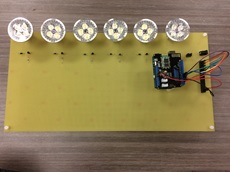 SA Personalized Learning Environment for Improved Classroom Performance
SA Personalized Learning Environment for Improved Classroom Performance
Abhitya Krishnaraj, American Heritage High School
Create a personalized learning environment that will include led lights that are controlled by an application. The application must control the lights using Bluetooth and must be able to remotely change its brightness. The prototype must be tested for effectiveness in a lab.
 First Effective Mathematical Model Allowing the Dramatic Improvement in the Efficiency of Biorotary Nanomotors Through the Application of Maxwell
First Effective Mathematical Model Allowing the Dramatic Improvement in the Efficiency of Biorotary Nanomotors Through the Application of Maxwell
Charlotte Kavaler, Bronx High School of Science
A nanomotor, a microscopic motor that is rotated by the flow of electrons from a region of high concentration—one of two source reservoirs—to one of low concentration—an electron drain. These reservoirs are supplied with a voltage. In previous designs for nanomotors, this voltage was kept constant, but in the model proposed, the voltage is varied depending on the electron state of the motor and on its angle of rotation.
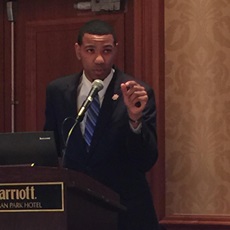 Noise-field and Mixing Characteristics of a Resonance Enhanced Micro-actuator Nozzle for Supersonic Applications
Noise-field and Mixing Characteristics of a Resonance Enhanced Micro-actuator Nozzle for Supersonic Applications
David Alexander IV, Tuskegee University
This research was conducted to understand the noise-field and mixing characteristics of the designed resonance enhanced micro-actuator nozzle system.
 FeverPhone: Point of Care Diagnosis of Acute Febrile Illness using a Mobile Device
FeverPhone: Point of Care Diagnosis of Acute Febrile Illness using a Mobile Device
Elvis Cao, Cornell University
Acute undifferentiated febrile illnesses are responsible for substantial morbidity and mortality globally. FeverPhone is a smartphone based molecular diagnostics platform for point-of-care differential diagnosis of six common causes of acute febrile illness.
 Interfacial Properties of Polymer/carbon Nanotubes: A Molecular Dynamics Study
Interfacial Properties of Polymer/carbon Nanotubes: A Molecular Dynamics Study
Farooq Syed, Tuskegee University
Carbon nanotubes (CNTs) play very important role in new technologies and science. Also, CNT-polymer composites have great potential as ultra-strong lightweight materials. We implemented molecular dynamics to study the interactions between polymer and carbon nanotubes.
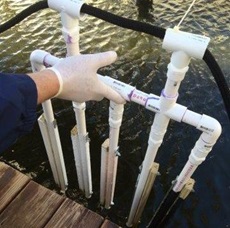
Effect of Capsiacin-Infused Paint on Barnacle Formation
Grey Leonard, American Heritage High School
The purpose of this research was to perform an initial assessment to see if a there is an easily-implemented, low-cost, non-toxic surface treatment that can slow or prevent the formation of barnacles.
 Protecting Civilians and Public Service Personnel through an Early Warning System for Airborne Chemicals: SEIAC
Protecting Civilians and Public Service Personnel through an Early Warning System for Airborne Chemicals: SEIAC
Hannah Herbst, Florida Atlantic University High School
Airborne chemical exposure has had catastrophic impacts on populations globally. This project was focused on developing an early warning mechanism for harmful airborne chemicals to avoid exposure and evacuate vulnerable populations quickly from impacted areas.
 FOptimization of Mechanical, Fire Retardant, and Thermal Stability of Biofiber Composites for Transportation Applications
FOptimization of Mechanical, Fire Retardant, and Thermal Stability of Biofiber Composites for Transportation Applications
Jasmine Tanthongsack, Tuskegee University
The aim of this study is to utilize the commonly available jute fiber and polyhydroxybutyrate biopolymer, and optimize their mechanical, fire retardancy, and thermal stability through incorporation of natural halloysite nanotubes (HNTs).
 Self Navigating Wheelchair- The Future of Mobility
Self Navigating Wheelchair- The Future of Mobility
Maya Nayak, Notre Dame High School
The goal of my project is to design a system to autonomously navigate a wheelchair from one location to another in a hospital environment.
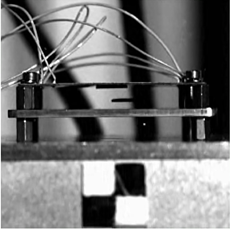 Algorithm for the Prognostication of Electronics Failures in Hybrid and Electric Vehicles
Algorithm for the Prognostication of Electronics Failures in Hybrid and Electric Vehicles
Rahul Lall, Auburn High School
Improvement in the reliability of electronics in vehicles necessitates the development of the ability to identify imminent failures. Currently, on-board diagnostics are used to detect the occurrence of failure and do not provide insight into the damage state of the system and the remaining useful life. The hypothesis that changes in the spectral behavior can be used to identify imminent failure in electronic assemblies has been tested.
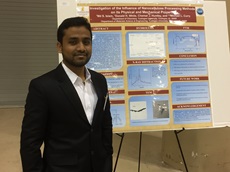 A Study on the Effect of Halloysite Nanotubes on the Thermal, Durability and Biodegradability Performance of Poly-(hydroxy-butyrate-hydroxy-valerate)-PHBV Nano Bio-composites
A Study on the Effect of Halloysite Nanotubes on the Thermal, Durability and Biodegradability Performance of Poly-(hydroxy-butyrate-hydroxy-valerate)-PHBV Nano Bio-composites
S M Kamrul Hasan, Tuskegee University
The aim of this study is to investigate the effect of halloysite nanotubes (HNTs) on the thermal, durability, and biodegradability properties of Poly (hydroxy-butyrate-hydroxy-valerate) (PHBV) biocomposites.
 Creating a System for Cheap Distributed Landmine Sensing Using GPS and GSM Technologies Coupled With Low Cost Electrical Design, Engineering, and Manufacturing Techniques
Creating a System for Cheap Distributed Landmine Sensing Using GPS and GSM Technologies Coupled With Low Cost Electrical Design, Engineering, and Manufacturing Techniques
Stefan Abi-Karam, American Heritage High School
The demining solution created in the project is to deploy many modules; each module contains a metal detector, GSM and GPS chip, and a microelectronic on custom PCB; data is sent to a location where a user app accesses data with to create a satellite heat map.
 A Novel Methodology to Build Organic Thermoelectric Materials for Sustainable and Renewable Energy Applications
A Novel Methodology to Build Organic Thermoelectric Materials for Sustainable and Renewable Energy Applications
Vera Zarubin, Bronx High School of Science
In this study, a new fabrication method for poly(3,4-ethylenedioxythiophene) poly(styrene sulfonate) (PEDOT:PSS) thin films was developed for the simultaneous enhancement of the thermoelectric response and electrical conductivity.